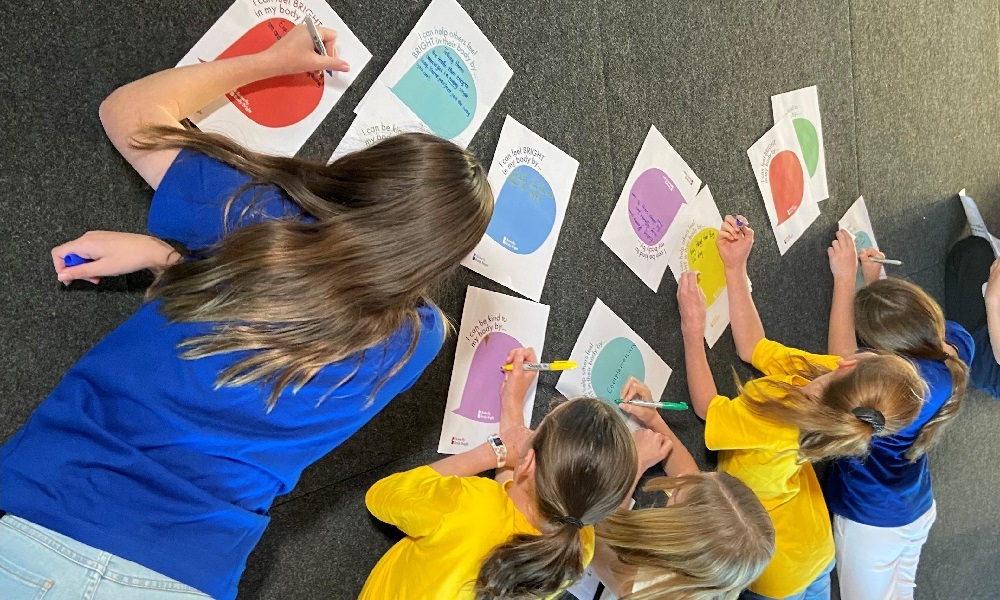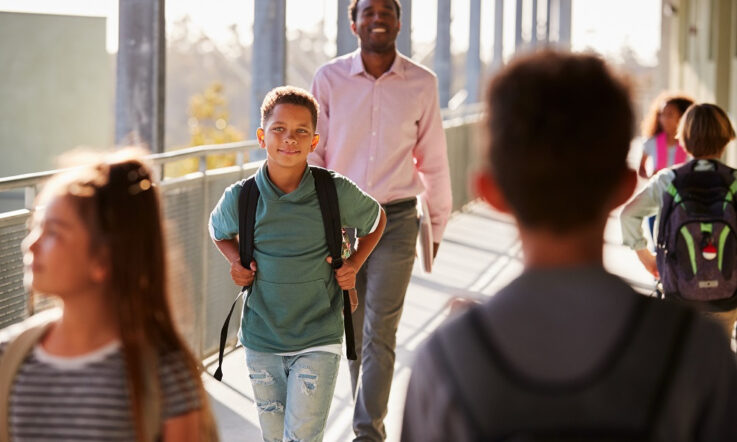A new whole-school program targeting positive body image development for students in primary school aims to work towards preventing body dissatisfaction and disordered eating in young Australians.
The program, Butterfly Body Bright, was developed by the Butterfly Foundation, a national charity for all Australians impacted by eating disorders and body image issues. It is Australia’s first body image program for primary school students.
‘The foundations for body image, weight attitudes, eating behaviours and physical activity patterns are formed early in life,’ Butterfly Foundation’s Dr Stephanie Damiano, who led the program’s development, says. ‘There are so many factors that can influence children’s body image and a number of those important factors sit within the school community. For example, a child’s peers, parents and teachers can all play a really important role.
‘The more a child is dissatisfied with their body the more likely they are to engage in unhelpful behaviours, such as reduced physical activity and more restrictive or over-eating behaviours, and are more at risk of experiencing emotional, academic and social problems. They are also at an increased risk of developing an eating disorder,’ she says.
The Body Bright program comprises of online staff training, curriculum-aligned lesson plans, resources for families and school culture guidelines. It is mapped to the Health and Physical Education (HPE) curriculum and includes six key areas of focus which were identified as areas that address risk and protective factors for body image in children. The first letter of each area spells out ‘bright’:
- Brave: against appearance teasing
- Resilient: to unhelpful media messages
- Inclusive: of all bodies
- Grateful: for their bodies
- Happy: from joyful movement
- Thoughtful: with their eating
The focus of the Brave theme is on positive peer interactions. Students can learn about being kind to others and standing up for themselves in the face of teasing and bullying based on appearances. The Resilient theme aims to improve children’s media literacy so they can think critically when exposed to appearance messaging in media and advertising. The focus of the Inclusive theme is on how bodies can look vastly different, and how our bodies function.
Grateful concentrates on body acceptance and appreciation, as well as self-esteem. The Happy module encourages children to appreciate their body’s functions and how regular physical activity can be fun and healthy. Finally, the Thoughtful theme delves into balanced eating attitudes and behaviours.
To be acknowledged as a Body Bright School, schools need to nominate a staff member to be the Body Bright lead; have at least six staff complete the online training; implement two or three strategies from the school culture guidelines; deliver the Brave lesson to students; and, share the link to the Body Bright Families webpage with parents and carers.
Teacher and community perspectives
During the program’s development process, a survey was conducted to capture the perspectives of community members who have a lived experience with body image and eating concerns which began in primary school.
‘We know that body image starts developing in childhood and that so many people start developing unhelpful body and eating concerns during their primary school years. We wanted to ensure that Butterfly Body Bright represented, and was informed by, the voice of lived experience, and we were so grateful to have 164 Australian adults share their insights and stories of developing body and eating concerns during primary school,’ Damiano says.
A young adult participant shared that they wished their school taught them more about their body and self-esteem. Two other participants reflected on the role of teachers and schools when it comes to body image:
‘Teachers need to be good role models. Don’t cut yourself down in front of kids because you teach them to do the same to themselves and each other.’
‘The more we can reinforce messages of acceptance and inclusion when kids are young, the better equipped they'll be both to move their own bodies and selves through life, and to make school and other environments that welcome everyone.’
A group of 28 primary school teachers were also invited to trial the program. After completing the online training, 96 per cent reflected that the whole-school approach of the program would have a positive impact on the body image of students; 82 per cent said they will role model positive body image in front of their students and 71 per cent said they’ll avoid talking about appearance in a negative way in front of their students.
Butterfly Body Bright is available to schools for free until 31 December 2021.
As a primary school educator, reflect on the school year so far. Have you had the opportunity to talk with students about positive body image? If not, what steps could you take to begin conversations with students about this topic?



